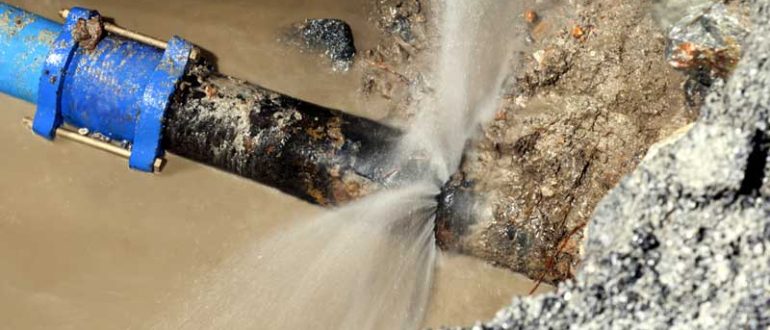Dealing with plumbing issues can be a daunting task for any homeowner, and among the most critical concerns is identifying and managing burst pipes. A burst pipe not only disrupts your daily routine but can also lead to significant property damage if not addressed promptly. But how do you detect a problem that’s often hidden within the walls of your home? This comprehensive guide is designed to empower homeowners with the knowledge needed to recognize the warning signs of a burst pipe. We’ll explore various indicators, from subtle clues to unmistakable signs, ensuring you’re well-equipped to take swift action. Understanding what to look for is crucial in mitigating the impact of these plumbing emergencies. So, let’s delve into the tell-tale signs of burst pipes, effective prevention strategies, and the latest in water leak detection technology. With this guide, you’ll not only learn how to spot potential issues but also discover practical tips for maintaining the health of your home’s plumbing system. Get ready to become a savvy homeowner who’s prepared to tackle one of the most common household challenges with confidence and knowledge.
Understanding Burst Pipes: A Homeowner’s Guide
Ever wondered how to know if pipes burst in your home? Understanding the warning signs can save you from costly repairs and extensive damage. Let’s dive into the crucial indicators and prevention strategies for burst pipes.
Signs of Burst Pipes
Identifying a burst pipe early can prevent a minor issue from becoming a major headache. Here are key signs to watch for.
Unusual Noises
When a pipe bursts, it often sends acoustic signals throughout your plumbing system. Be alert for unusual sounds like clanging, thumping, or whistling, which can indicate a breach in the pipes. These noises may become more pronounced when using water fixtures, such as turning on the tap or flushing the toilet. They’re caused by the disruption of normal water flow, which creates turbulence and vibrations within the pipe. Recognizing these auditory cues can be your first line of defense against hidden water damage, prompting timely inspection and repair before the issue escalates.
Changes in Water Pressure
Sudden and unexplained changes in water pressure are often a red flag signaling a burst pipe. A significant drop in pressure may indicate a leak, as water escapes from the normal flow path. Conversely, unusual spikes in pressure can stress the pipes, potentially leading to cracks or bursts. These fluctuations can manifest in different ways, such as a weak shower stream or a faucet that sputters. Paying attention to these changes in your water system’s behavior is crucial for early detection, allowing you to address potential pipe issues before they turn into major problems.
Visible Damage and Water Stains
Visible signs of damage are clear indicators of a potential burst pipe. Look for water stains on walls, ceilings, or floors, which suggest a hidden leak. Dampness, mold growth, or a musty odor can also be symptoms of prolonged exposure to moisture from a leaking pipe. Additionally, watch for signs of corrosion or rust on exposed pipes, as these can weaken the pipe’s integrity over time. Catching these visible clues early can prevent a minor leak from escalating into a full-blown burst, saving you from extensive and costly repairs.
Burst Pipes Prevention Tips
Preventing burst pipes starts with proactive maintenance and awareness. Regularly inspect your plumbing for any signs of wear or damage. During colder months, protect your pipes from freezing by insulating them and keeping the indoor temperature warm. Be mindful of the water pressure in your home, as extreme variations can strain the pipes. Avoid clogging by being cautious of what goes down your drains. Seasonal check-ups by a professional plumber can also play a crucial role in early detection and prevention of potential problems. Simple preventative measures can go a long way in ensuring the longevity and efficiency of your home’s plumbing system.
Routine Maintenance
Regular maintenance is key in preventing pipe bursts. This includes routine inspections for any signs of damage or corrosion, especially in older plumbing systems. Ensure that your pipes are properly insulated, particularly in areas susceptible to cold temperatures. Cleaning your pipes and drains regularly can prevent blockages that lead to increased pressure and potential ruptures. It’s also wise to monitor your water bill for unexplained increases, which could indicate hidden leaks. Engaging a professional plumber for annual check-ups can help identify and fix minor issues before they escalate into major problems, safeguarding your home against the risks of burst pipes.
Protecting Pipes in Cold Weather
Winter brings the challenge of protecting pipes from freezing, a common cause of bursting. Insulate pipes in unheated areas like basements, attics, and garages. On extremely cold nights, let faucets drip slightly to keep water moving, reducing the risk of freezing. Keep cabinet doors under sinks open to allow warmer air to circulate around the plumbing. It’s also important to seal any cracks or holes in exterior walls to prevent cold air from reaching the pipes. These simple yet effective steps can significantly reduce the likelihood of your pipes freezing and bursting during the cold months.
Water Leak Detection
Professional water leak detection services play a vital role in identifying and addressing hidden leaks in your plumbing system. These experts use advanced techniques like acoustic sensors, thermal imaging, and video pipe inspection to pinpoint the exact location of leaks without invasive methods. Regularly employing these services, especially in older homes or buildings with a history of plumbing issues, can be a wise investment. Early detection by professionals not only saves you from costly repairs but also helps in maintaining the overall health of your plumbing system, ensuring a safe and secure home environment.
Conclusion
Understanding how to know if pipes burst is key to maintaining a safe, damage-free home. Regular maintenance and early detection are your best defense against burst pipes. Stay vigilant and proactive to protect your home.

